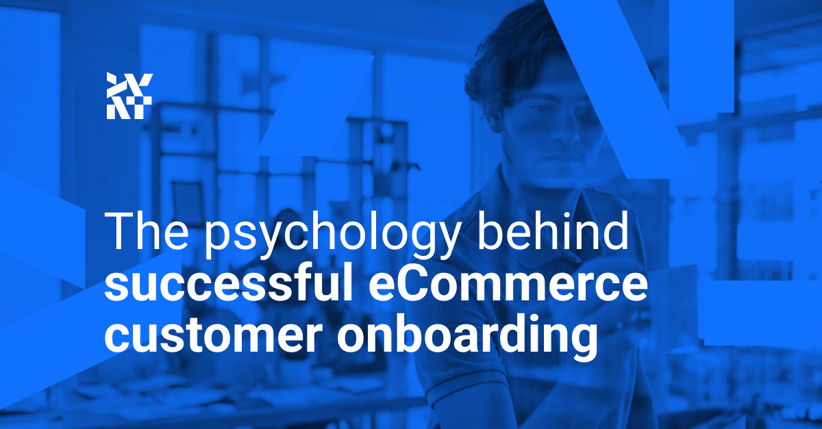Nothing feels more frustrating than losing your customers right after they land on your website. It’s a clear sign that, despite all efforts, your onboarding process is failing.
Let's face it, onboarding is a crucial aspect of any eCommerce business. It's the first impression that customers have of your brand, and it sets the tone for the rest of their journey. With so many options available to them, customers are becoming increasingly impatient and unforgiving. They want a seamless, intuitive, and personalized experience, and they want it now.
It might be overwhelming. You've probably tried everything from pop-ups and welcome messages to tutorial videos and guided tours. Despite your efforts, your bounce rates remain high, and your conversion rates remain low. It's understandable to lose motivation when that happens.
However, here's the thing: you're on the right track. You're just missing a crucial piece of the puzzle. Successful onboarding isn't just about showcasing your products and features. It's about understanding your customers' needs, preferences, and behaviors. It's about creating a connection with them and making them feel heard, seen, and valued.
In this article, we'll dive into the psychology behind successful eCommerce onboarding for customers and show you how to create an experience that delights your customers and drives conversions. We'll share practical tips and real-world examples that you can implement right away.
Leveraging the power of reciprocity
When it comes to eCommerce onboarding with customers, one psychological principle that marketers should pay attention to is the power of reciprocity. The idea is simple: when someone receives a gift or favor, they feel obligated to return the favor. By implementing a reward system during customer onboarding, eCommerce companies can trigger this sense of obligation in users and encourage them to engage more deeply with the platform.
Some effective reward strategies include offering discounts, free shipping, or exclusive access to certain features. For example, Sephora's Beauty Insider program rewards customers with points for purchases that can then be redeemed for free products and exclusive experiences. This incentivizes customers to shop more frequently while also creating a sense of exclusivity and community.

Reciprocity can also lead to long-term customer loyalty. By offering personalized recommendations and tailoring the onboarding experience to each user's needs, eCommerce companies can demonstrate their commitment to building a lasting relationship. This can foster a sense of trust and loyalty in users, which can lead to repeat purchases and positive word-of-mouth referrals.
Harnessing social proof to drive user engagement
Social proof is another powerful psychological concept that eCommerce companies can leverage when onboarding customers. Essentially, social proof is the idea that people are more likely to follow the actions of others when they are uncertain about what to do. By showcasing testimonials, reviews, and user-generated content during onboarding, eCommerce companies can provide customers with social proof that their products and services are high-quality and reliable.
 Example of social proof on Carraway home eCommerce website
Example of social proof on Carraway home eCommerce website
Integrating social media into the customer onboarding process is another effective way to harness the power of social proof. By highlighting user-generated content on social media platforms, eCommerce companies can demonstrate the value and popularity of their products to a wider audience. This can not only boost conversion rates but also reduce churn by fostering a sense of community and belonging.
Using the power of anticipation to increase excitement and engagement
The power of anticipation is the psychological principle that we enjoy things more when we anticipate them. In the context of eCommerce onboarding for customers, this principle can be used to increase excitement and engagement among users.
One effective way to use anticipation is to break up the onboarding process into smaller, more manageable steps. By providing users with a clear sense of what to expect at each stage of the process, eCommerce companies can create a sense of anticipation and excitement for what's to come.
Another strategy is to offer sneak peeks or previews of upcoming features or products. For example, a clothing retailer could offer a sneak peek of its upcoming fall collection during the onboarding process. This will increase excitement and motivate users to complete the process.
By using the power of anticipation, eCommerce companies can increase excitement and engagement among users and create a sense of momentum and progress that can keep users coming back for more.
Tapping into the scarcity principle to stimulate action
The scarcity principle is the idea that people are more motivated to take action when they perceive that a resource or opportunity is scarce or limited. By offering limited-time promotions and exclusivity during customer onboarding, eCommerce companies can tap into this psychological principle and stimulate action among users.
One effective strategy is to offer time-limited discounts or promotions. For example, Amazon's Prime Day event is a limited-time sale that incentivizes users to make purchases before time runs out. This creates a sense of urgency and excitement while also increasing the perceived value of the products or services being offered.

However, it's important to balance scarcity and accessibility for long-term success. If a promotion is too exclusive or difficult to access, it can lead to frustration and alienation among users. By finding a balance between scarcity and accessibility, eCommerce companies can create a sense of urgency without alienating potential customers.
Implementing gamification to enhance user experience
Gamification is the process of adding game-like elements to non-game contexts to enhance engagement and motivation. In the context of eCommerce onboarding, gamification can be a powerful tool for enhancing the user experience and driving engagement. By tapping into users' intrinsic motivations and desire for achievement, eCommerce companies can create a more immersive and enjoyable customer onboarding process.
There are a variety of gamification elements that can be integrated into the customer onboarding process, such as progress bars, badges, and leaderboards. For example, Duolingo, a language-learning app, uses a gamified system of levels and rewards to motivate users to continue learning. This makes the learning process more enjoyable and encourages users to stick with the app over the long term.
Measuring the impact of gamification on user engagement and retention is key to determining its effectiveness. By tracking metrics such as time on site, completion rates, and repeat visits, eCommerce companies can gain insight into the impact of gamification on user behavior and adjust their strategies accordingly.
Optimizing the halo effect to boost brand perception
The halo effect is the phenomenon in which our overall impression of a person or brand influences our perception of their specific qualities or characteristics. In the context of eCommerce onboarding, the halo effect can be used to create a positive first impression and boost brand perception.
Crafting a seamless and visually appealing customer onboarding experience is key to optimizing the halo effect. By paying attention to the details of the onboarding process, such as the design, copywriting, and user flow, eCommerce companies can create a memorable and positive first impression. This can increase the likelihood of users completing the onboarding process and influence their perception of the brand as a whole.

An example of great design from Flaus
Leveraging the halo effect to establish trust and credibility is another critical strategy. By highlighting the company's values, mission, and commitment to customer satisfaction, eCommerce companies can create a sense of trust and credibility among users. This can lead to increased loyalty and positive word-of-mouth referrals.
Takeaways
The benefits of investing in a successful customer onboarding experience are many. By creating a more personalized, immersive, and enjoyable onboarding experience, you can increase engagement, retention, and loyalty among your users. This can lead to higher conversion rates, repeat purchases, and positive word-of-mouth referrals.
So, don't give up! Leverage the power of reciprocity, harness social proof, and utilize cognitive dissonance. Tap into the scarcity principle, implement gamification, and optimize the halo effect to create a truly memorable and effective onboarding experience for your users.
Remember, it takes time and effort to create a successful onboarding experience, but the rewards are worth it.
 |
Trevor Hatfield founded Inturact, a company providing B2B SaaS user onboarding and customer onboarding solutions that help SaaS companies identify and solve actual product onboarding problems, reduce risk, and provide a clear path to increased paid conversions and better retention. |
Published May 26, 2023











